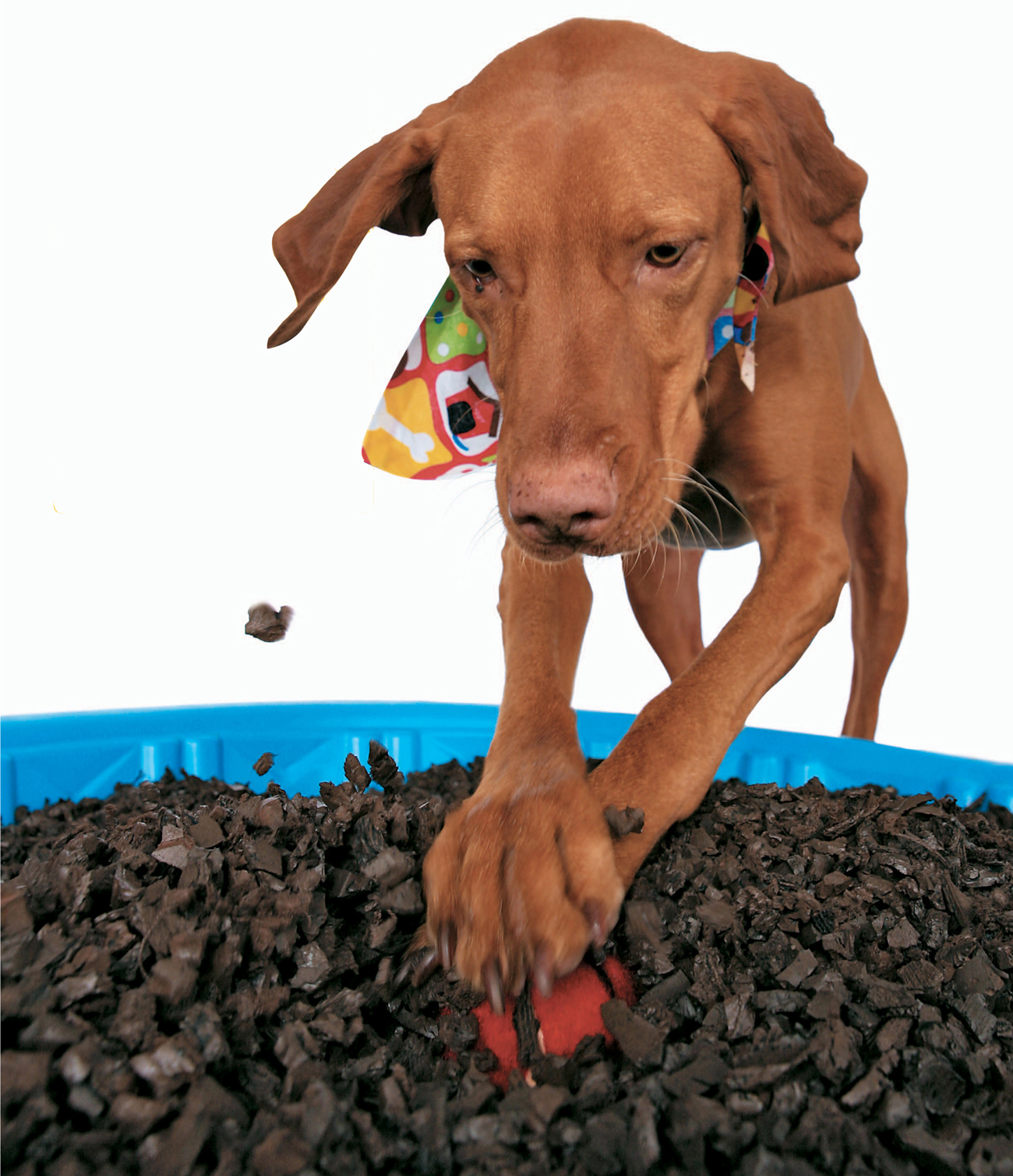

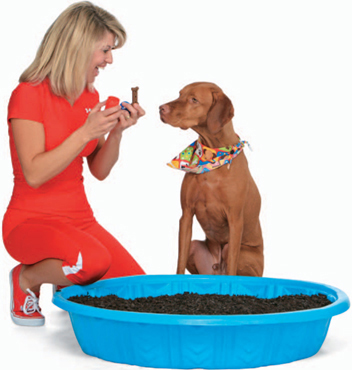
1 Hide a treat inside a ventilated canister or cut a 1-inch (2.5 cm) slit in a tennis ball and hide a treat inside it. Let your dog watch you and sniff the canister.
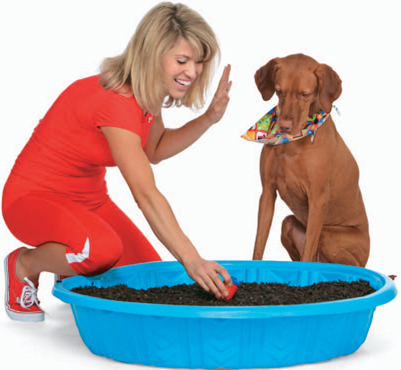
2 Bury the canister just barely under the surface and maybe even partially visible.
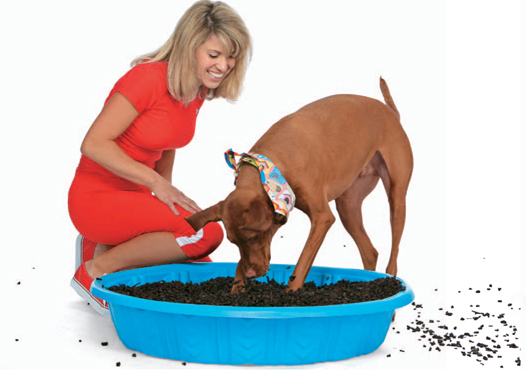
3 Enthusiastically tell your dog, “Dig! Dig!” If he is hesitant, pull the canister out, let him sniff it, and bury it again.
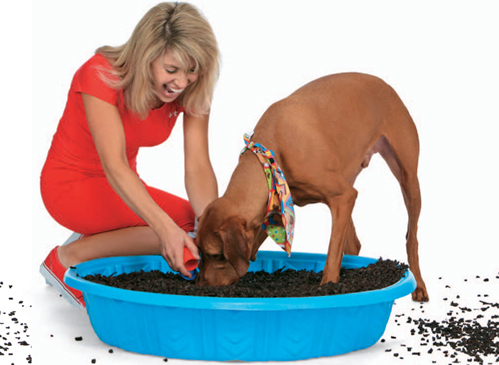
4 When he uncovers the canister, open it and give him the treat near the spot where he found it (it will increase the excitement of the game if he feels as if he dug up the treat).
TIP:
If your dog tries to nose for the canister instead of digging, cover the canister for a second with your hand and then give him the idea to dig by digging a little yourself with your hand.
EQUIPMENT:
Rubber mulch, sold at gardening stores, is a cleaner substitute for real dirt or sand. A baby food jar with ventilation holes punched in the lid works as a canister.
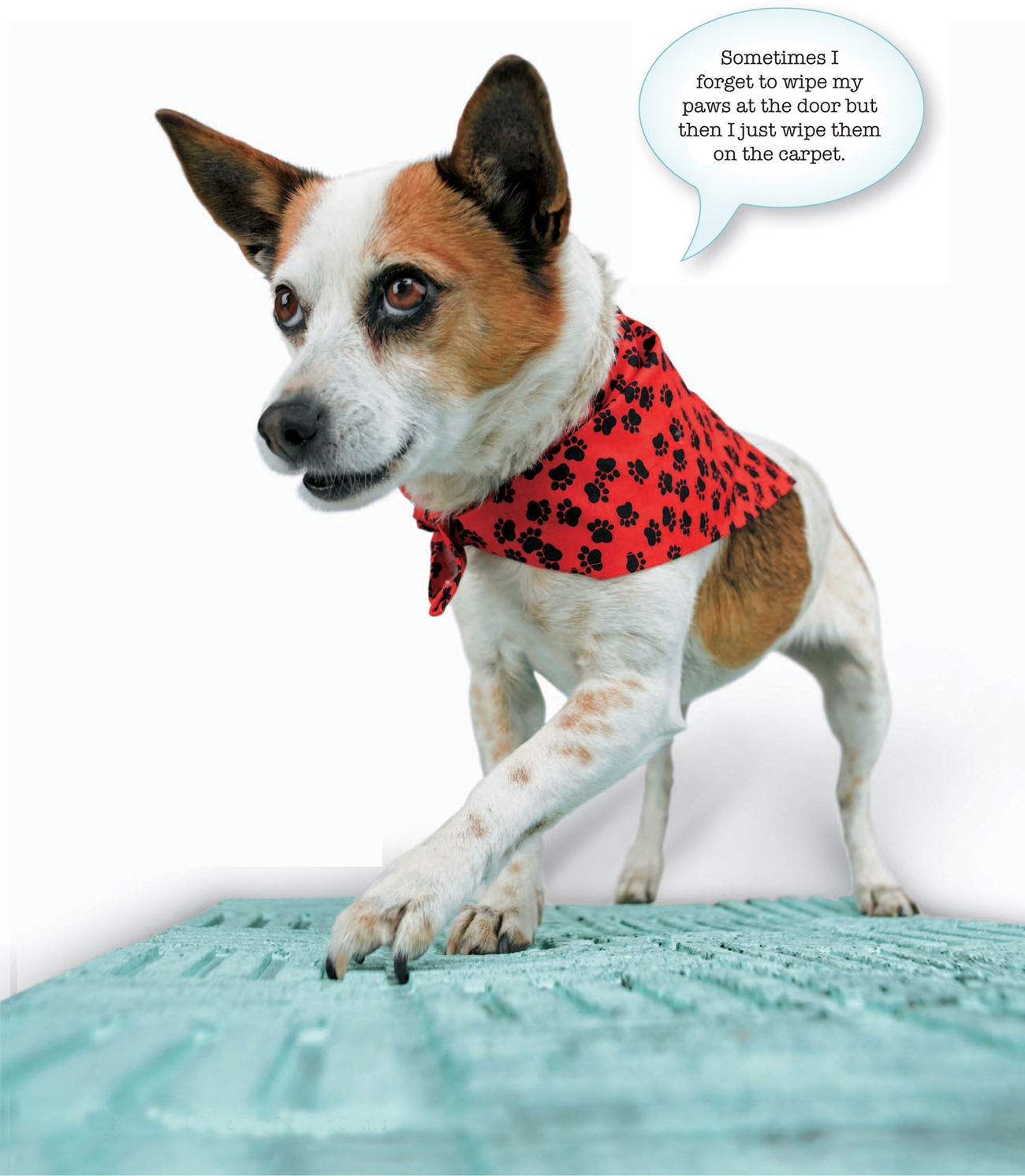
Sometimes I forget to wipe my paws at the door but then I just wipe them on the carpet.
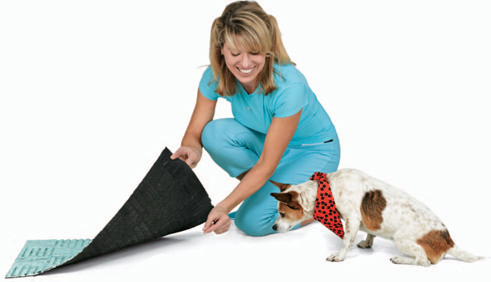
1 Show your dog as you put a treat on the ground (hard dog biscuits work best). Cover the treat with the doormat, so that the treat is near the corner of the mat.
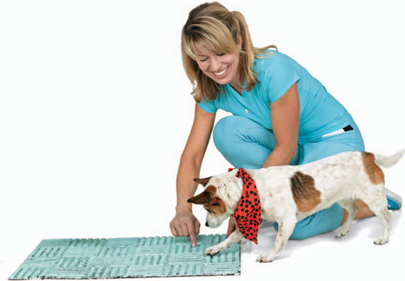
2 Hold the edge of the doormat down, because your dog will probably try to poke his nose under it. Keep encouraging your dog, “Get it! Get it!” If he loses interest, quickly lift the corner of the doormat to show him the treat and put it back down again.
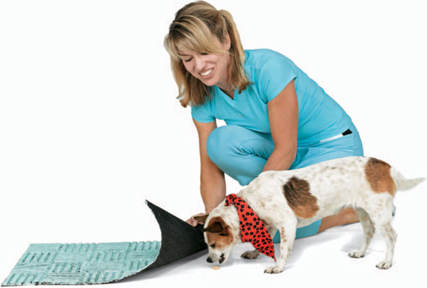
3 When he gets frustrated, your dog will scratch at the doormat—be ready for this! The instant he does even one scratch, say, “Good!” and lift the doormat for him to get the treat.
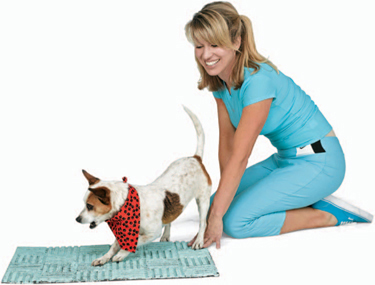
4 As he gets better, wait for him to do two or three scratches before rewarding him. You can then stop putting the treat under the doormat and toss it where he is digging instead (it will be more fun for him if he “digs up” the treat rather than getting it from your hand).
TIP:
Dogs enjoy this game and the excitement of “digging up” their treat. Dogs usually nose the doormat a lot at first and might do just one tentative scratch—don’t miss it! Reward your dog for just the slightest scratch, and in no time he’ll be wiping his paws like a good dog!
EQUIPMENT:
Your dog will be scratching the mat (as opposed to gently wiping his paws), so choose a fairly heavy-duty mat that won’t rip and won’t bunch up.
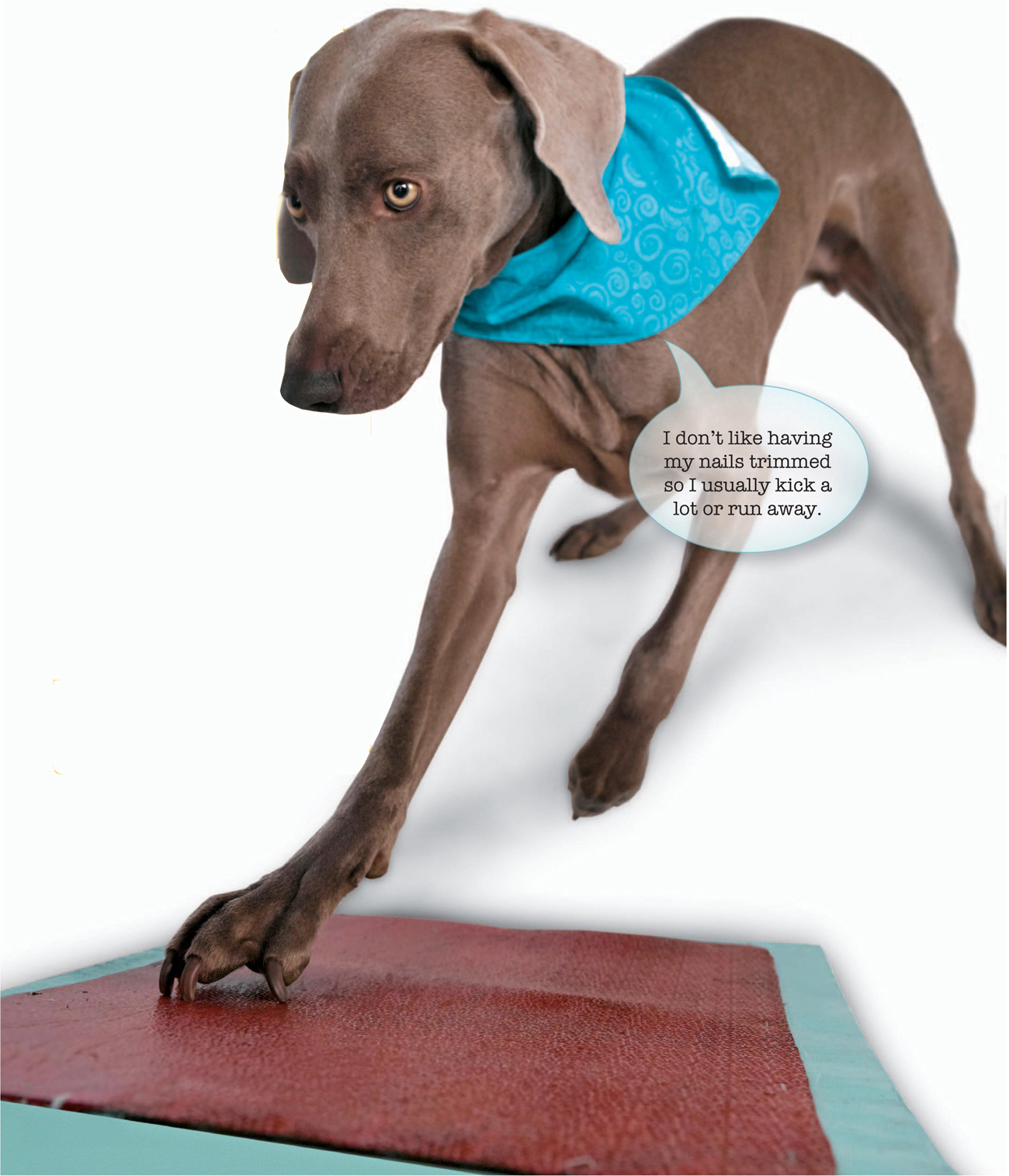
I don’t like having my nails trimmed so I usually kick a lot or run away.
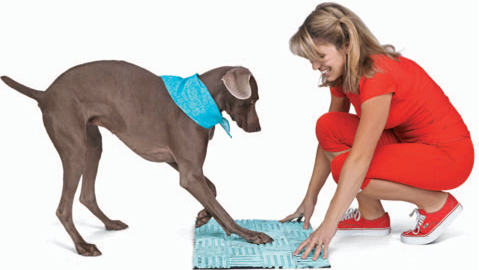
1 First teach your dog Wipe Your Paws (page 164). Next, lay the doormat on top of the scratchy board on the floor, and have your dog wipe his paws. Give him a treat for doing so.
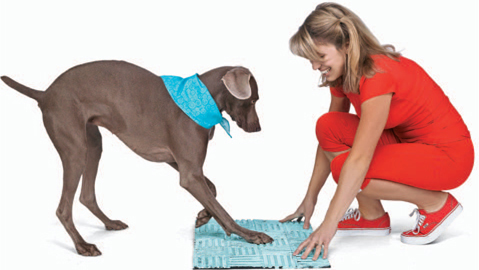
2 Raise one end of the board and doormat slightly. Sit near the high end of the board and try to get your dog to scratch again. When you reward him, do so by tossing the treat on the high end of the doormat, because your dog will focus on the place where the treat appears.
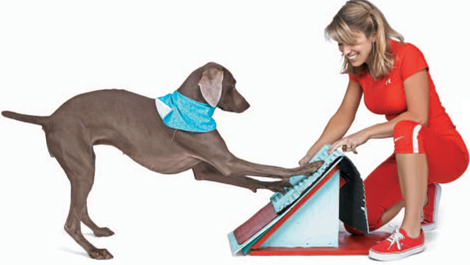
3 Partially slide the doormat off the top end of the board and raise the angle a bit more. Your dog will scratch at the doormat, but his paws will sometimes also end up brushing against the scratchy board.
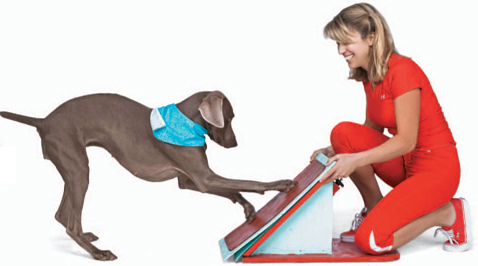
4 Keep sliding the doormat up, until it is entirely gone. Tell your dog, “Scratch! Scratch!” and tap the scratchy board occasionally to keep him focused. Periodically give him a treat near the top of the board.
TIP:
Some dogs find this game self-rewarding and will do it even without a treat. If your dog is a tenacious scratcher, you may need to hide the scratchy board away when you are not home.
EQUIPMENT:
Affix sandpaper to a sturdy board using a staple gun or glue.
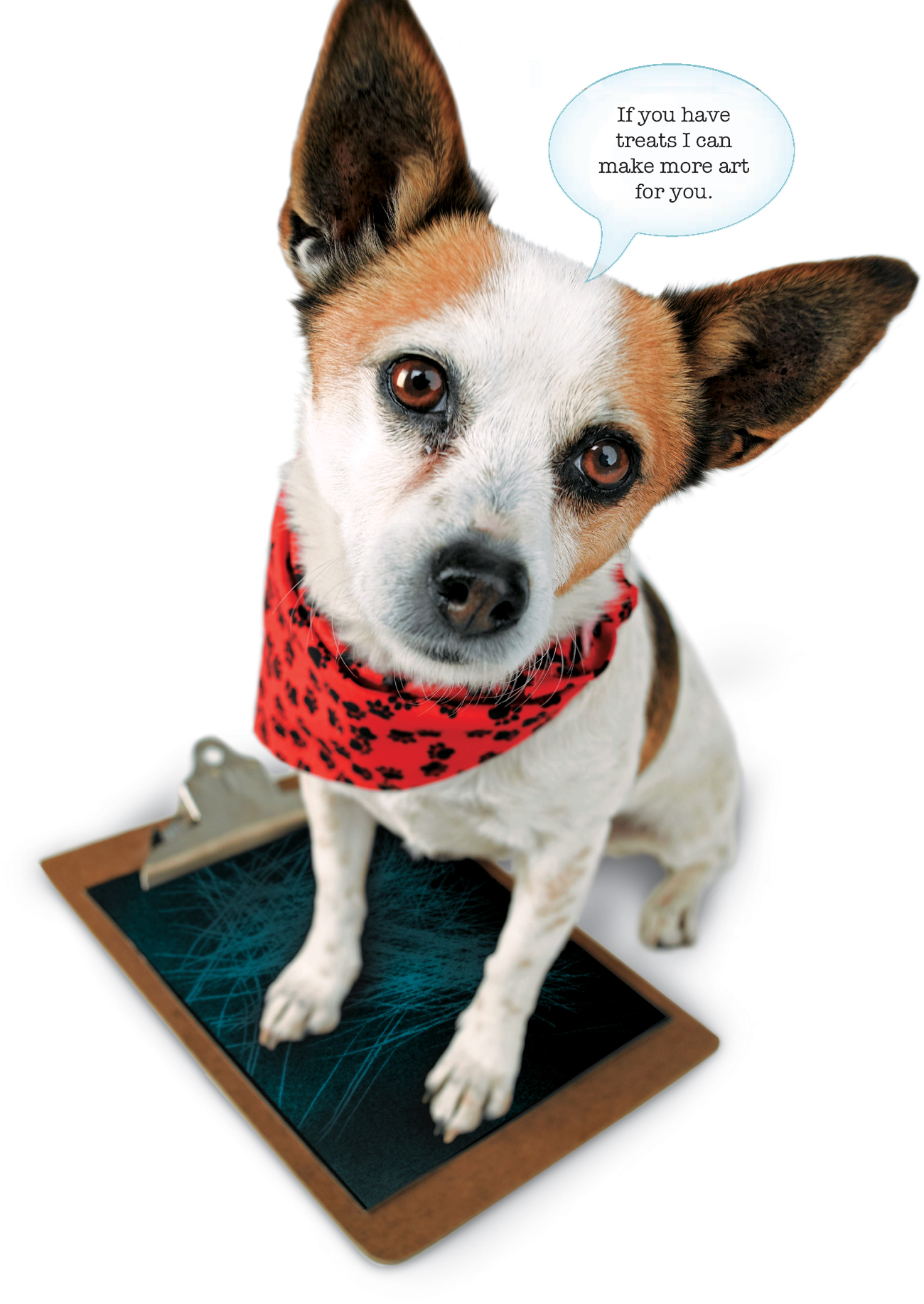
If you have treats I can make more art for you.
TIP:
Dogs tend to scratch at the edges of the paper, ripping it. You may have to tape down the edges to a clipboard.
EQUIPMENT:
Scratch art paper is colored paper that is covered with a second color surface. This top surface can be scratched off to reveal the color below. You can get a similar effect using transfer paper (such as carbon paper). Since transfer paper is thin, cover the sheets in plastic page protectors.
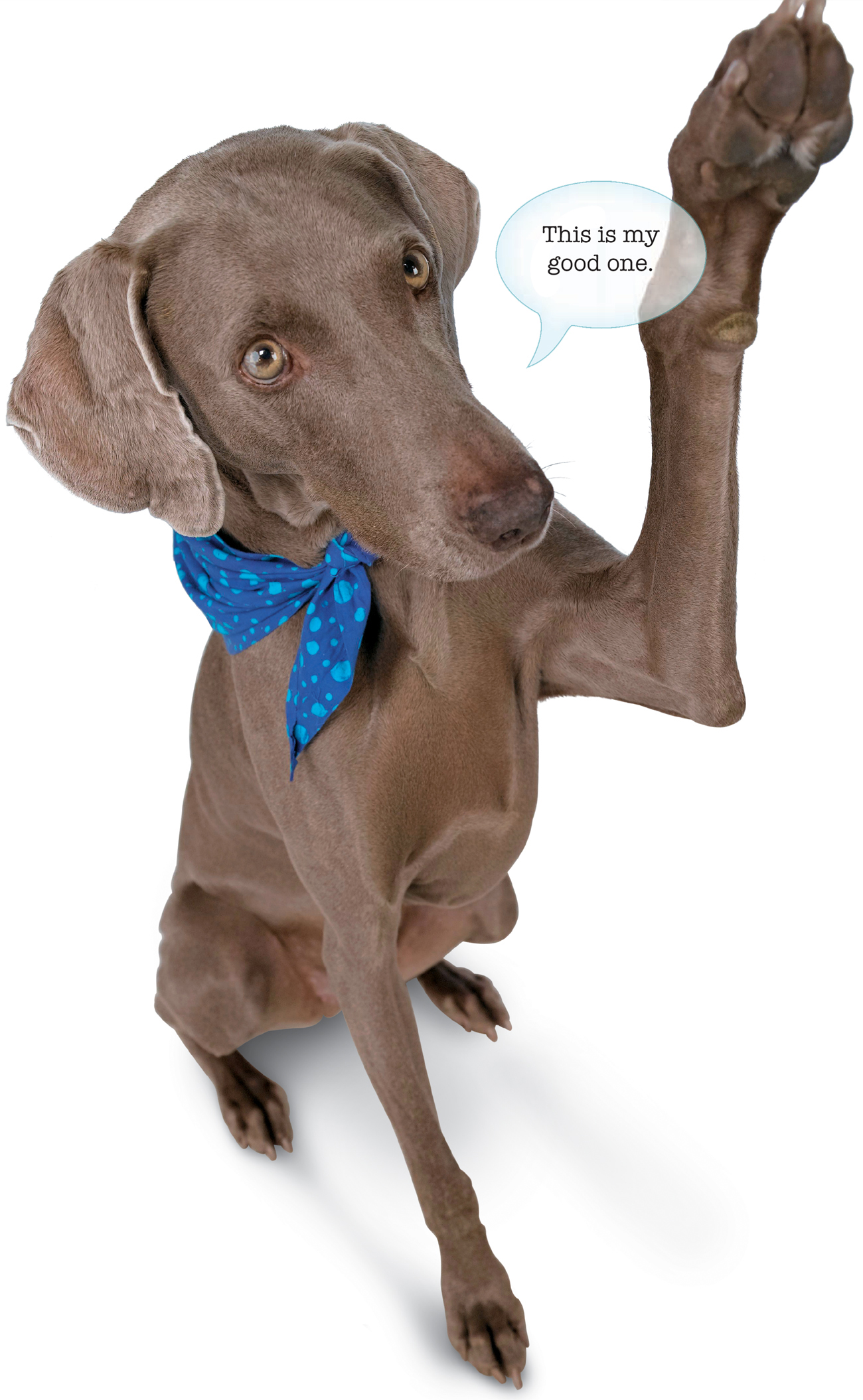
This is my good one.
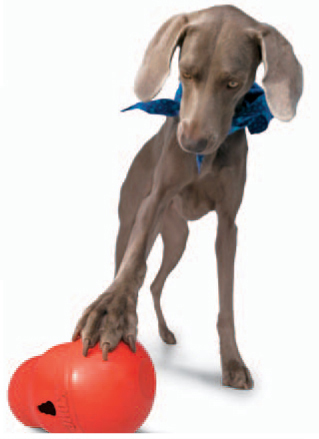
1 Give your dog a treat-dispensing pyramid or cube that must be pawed instead of nosed. Which paw does he use most often?
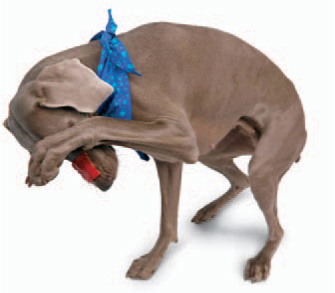
2 Stick a piece of tape to the center of your dog’s head or muzzle. Which paw does he use to get it off?
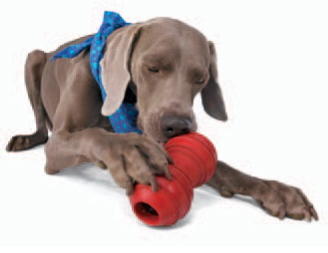
3 Give your dog a bone or peanut-butter-filled toy. Which paw does he use to hold it?
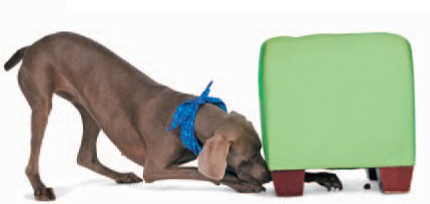
4 Put a treat or toy under a piece of furniture. Which paw does your dog use to reach for it?
TIP:
As with humans, your dog will use both paws . . . but he will use one a little more than the other. Watch your dog over a period of time and see if you can figure out which is his dominant side. Knowing his paw preference will help you adjust your training when teaching Slam the Door (page 26) or Pawprint Painting (page 170).
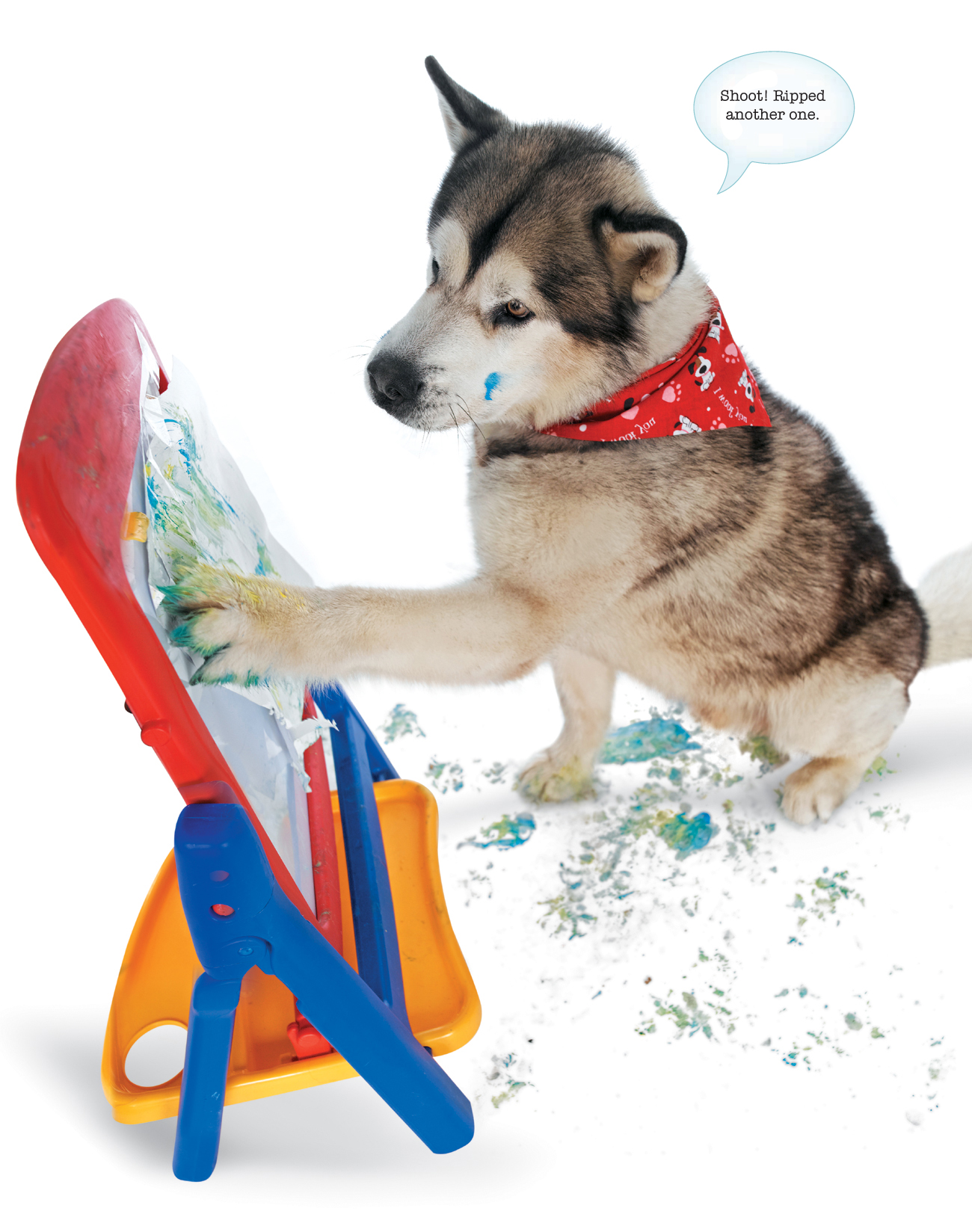
Shoot! Ripped another one.
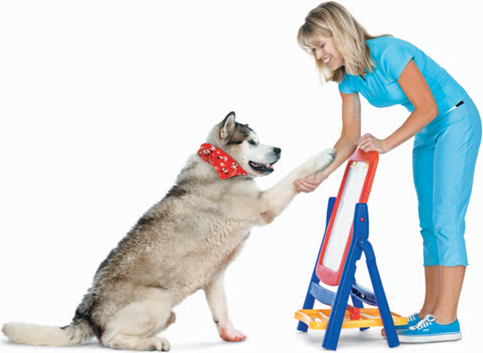
1 For the first step, you want your dog to give you his paw. If he knows a cue word for “shake hands,” then use that. If not, try holding a treat in your fist, low to the ground, and opening your hand when your dog paws at it.
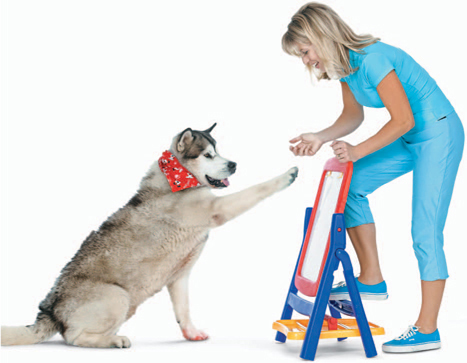
2 Next, ask your dog to “shake hands,” but at the last second, pull your hand back so he is pawing at the air, or even at the easel. Give him a treat for this.
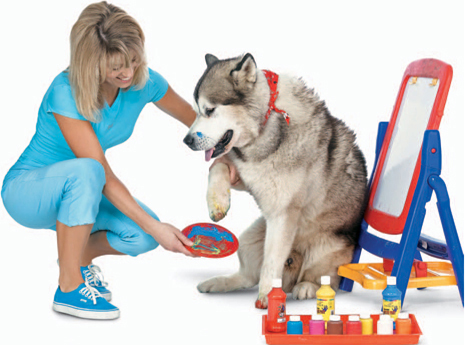
3 Pour some paint into a plate, lift your dog’s paw, and press the paint onto his paw (and not his paw down into the paint).
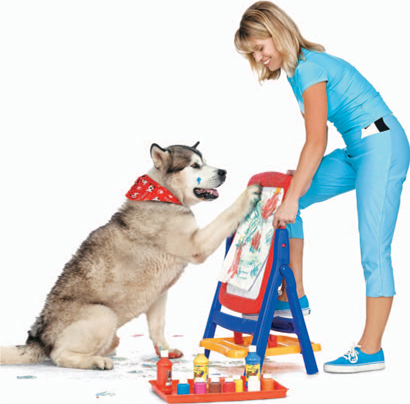
4 Stand behind the easel, hold out your hand, and ask your dog to shake hands. Again, pull your hand out of the way so he paws at the paper. Give him a treat each time that he does!
TIP:
Do your painting outdoors or in the shower. Have your dog lay down one color and let it dry for a minute before laying down the next color (otherwise it can turn into a muddy-colored mess). It may be easier to lay the easel in your lap.
EQUIPMENT:
Use nontoxic, washable kids’ paint.